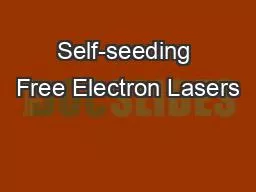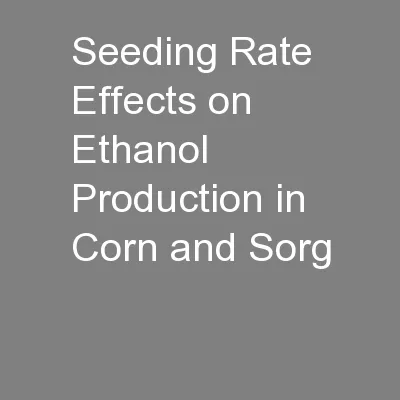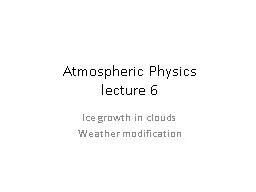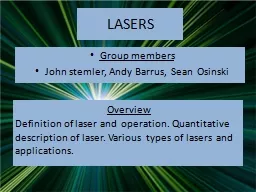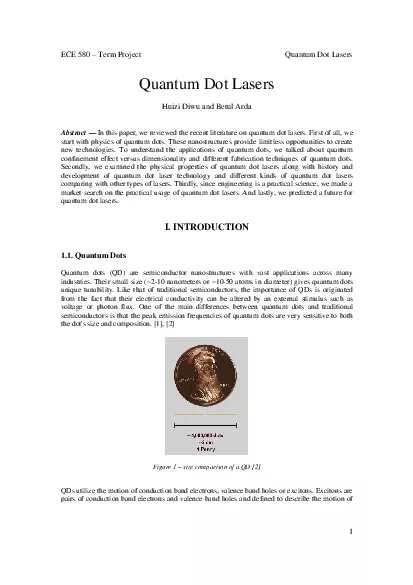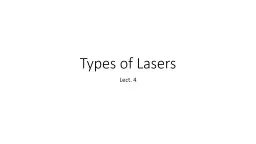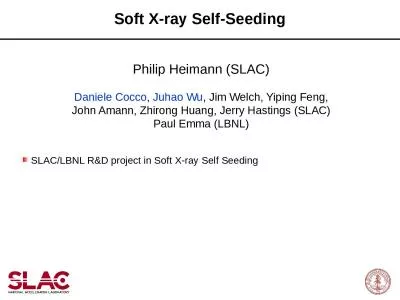PPT-Self-seeding Free Electron Lasers
Author : avantspac | Published Date : 2020-08-29
J Wu FEL Physics Group Beam Physics Department Oct 26 2010 Accelerator Research Division Status Meeting October 26 2010 ARD Status meeting jhwuslacstanfordedu J
Presentation Embed Code
Download Presentation
Download Presentation The PPT/PDF document "Self-seeding Free Electron Lasers" is the property of its rightful owner. Permission is granted to download and print the materials on this website for personal, non-commercial use only, and to display it on your personal computer provided you do not modify the materials and that you retain all copyright notices contained in the materials. By downloading content from our website, you accept the terms of this agreement.
Self-seeding Free Electron Lasers: Transcript
Download Rules Of Document
"Self-seeding Free Electron Lasers"The content belongs to its owner. You may download and print it for personal use, without modification, and keep all copyright notices. By downloading, you agree to these terms.
Related Documents

